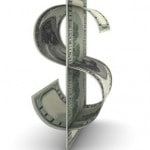Understanding Cash For Clunkers And Cautious Optimism
Earlier today I published an article pointing out that the benefits in terms of subscribers for the Cash For Clunkers were not instantaneous, but rather months away. Instantly I got comments and emails accusing me of being a “buzz Killer” of the positive events in the stock price of the past couple of days.
My article was not intended to be a buzz killer, but rather a piece to temper what seems to be overreaction to the program and what it means to SDARS in the near term. My philosophy is that the program has merits, but that the real benefit comes when the OEM channel is once again normalized. The program right now is serving to normalize inventory levels at the manufacturers, as well as dealer lots. When the inventory levels normalize, production can normalize, and the OEM channel can once again begin on a smoother supply and demand cycle.
One email I received, while garbled in delivery seemed to take me to task, but is actually a perfect example of the irrational thinking that people have regarding the program:
“Oh yes…I would like to weigh in on a bit of negativity I’m hearing regarding cash for clunkers…apparently, it seems to great of a concept to grasp the fact that just because there are X number of cars being sold under the CFC program, there are 3 X as many cars being sold as a result of non-qualified people coming in and buying a new car anyway..”
In fairness, this reader has probably been subjected to the same media hype and auto ads that make the program seem so much bigger than it has been.
The cash for Clunkers program, launched in July, has sold about 185,000 cars through August 5, 2009. This reader obviously feels that Cash for Clunkers is delivering sales above and beyond because of added foot traffic. Sure, other cars are selling, but how substantial is the number? The answer is that the numbers simply are not as substantial as the media would have you believe.
June 2009 sales – 856,670 (down from about 1,250,000 in June of 2008)
Total sales through June 2009 – 4,785,158
July 2009 sales – 994,002 (down from about 1,150,000 in July of 2008)
Total Sales Through July – 5,779,111
Thus July brought a boost in sales of 137,332 cars over June. July is typically weaker than June by about 5%. Realistically speaking, the July number should have been about 813,000 absent the program. Cash for Clunkers stands at 185,000 cars. If we add the 185,000 from the program to what would have been typical sales, we arrive at 998,000 (pretty darn close to what actually sold). In realistic terms, we can attribute success in the Cash for Clunkers program as erasing a typical dip in July, and accomplishing a boost in and of itself for program cars. However, if we were to remove the Cash for Clunkers program, sales were no different than what would have been expected. Thus, 185,000 additional cars sold, and my original article broke down when those additional 185,000 vehicles would hit the subscriber pool of Sirius XM (Q3 and Q4).
Cash For Clunkers By Manufacturer Through August 5, 2009
NOTE: Assume a penetration rate of 40% and Take rate of 40% due to type of cars being sold. Some manufacturers have much deeper installations, but to keep it simple I am assigning overall assumptions.
GM – 18.7% – 34,595 cars – 13,838 sat. equipped as subs in Q3 – 5,535 will become self pay in Q4
Toyota – 17.9% – 33,115 cars – 5,298 will become self pay sub in Q4
Ford – 16.0% – 29,600 cars – 11,840 sat. equipped already counted as a sub in Q1 or Q2 – 4,736 will become self pay in Q1 or Q2 2010.
Honda – 11.6% – 21,460 cars – 8,584 sat. equipped subs in Q3 – 3,433 will become self pay in Q4.
Chrysler – 10.6% – 19,610 cars – 7,844 sat. equipped already counted as subs in Q1 – 3,137 will become self pay in Q3 of 2010.
Nissan – 7.0% – 12,950 cars – 2,072 will become self pay subs in Q4.
Hyundai – 6.6% – 12,210 cars – 1,953 will become self pay in Q4
Kia – 3.8% – 7, 030 cars – 1,124 will become self pay in Q4
Mazda – 2.3% – 4,255 cars – 1,702 sat equipped already counted in Q1 or Q2. 680 will become self pay in Q4
Subaru – 2.2% – 4,070 cars – 651 sat equipped cars will become self pay in Q4
Volkswagen – 1.9% – 3515 cars – 1,406 already counted as subs in Q1 or Q2 – 562 will become self pay in Q4
Suzuki – 0.4%
MINI – 0.3%
Mitsubishi – 0.3%
Smart – 0.2%
Volvo – 0.1%
All Other – 0.1%
As you can see, the program helps, but the numbers are not huge, and are spread out over several quarters. If the Cash For Clunkers program continues, then the numbers will obviously be bigger. The key is whether or not the Cash For Clunkers can serve to stabilize supply and demand, and spark additional sales. At this point, sales outside of the program are as expected.
Having followed this equity for quite some time I have seen all to often the reactions of passionate investors to certain types of news. I have fallen into the trap myself and have learned from the process. This isn’t about being a buzz killer, or seeing the glass half empty. It is about looking at real numbers and applying realistic expectations. A stock run up is great, but it is so much better when it runs up on good and solid metrics instead of wishful thinking. The important factor here is a stable supply and demand scenario, not the 40,000 or so subs that will become real over the next several months. An interesting note is that Michigan leads the way with $44,000,000 in requested vouchers and 45% of the cars sold in the program are from the “big three”.
Position – Long Sirius XM Radio – No Position OEM’s





WASHINGTON – The Senate reached a deal on saving the dwindling “cash for clunkers” program late Wednesday, agreeing to vote on a plan that would add $2 billion to the popular rebate program and give car shoppers until Labor Day to trade in their gas-guzzlers for a new ride.
Following lengthy negotiations, Senate Majority Leader Harry Reid said Democrats and Republicans had agreed to vote on the plan Thursday, along with a series of potential changes to the bill, which was passed by the House last week. Reid has said Democrats have enough votes to approve the measure and reject any changes that would cause an interruption in the rebates of up to $4,500.
Tyler –
This is a real positive and will brng floods of people into teh showrooms and not just buy if they can turn in their clunker, but they probably had something kick them in the butt to spark them to buy. The senate just approved another 2 Billion tonight, so we’re talking about the balance of the 3rd Q being big on sales, whether it be a trade in from a clunker, rebate sale or used car sale.
I understand this hasn’t helped Q2, but Q3 & 4 will be massive turnaround in the run rate. I hope your not underestimated the effect going forward, the traffic this will cause and impulse buying that we needed here. Not to mentio, with $4500 off, more people will go for the option if not pre-installed.
sxm….
“floods of people into showrooms”
Impulse buys are happening, but not in huge numbers as yet.
Look at the numbers I provided. With $3 Billion, cash for clunkers will sell 750,000 cars.
We have not seen an uptick outside cash for clunkers as yet, and the numbers for July bear this out. Thus, it is not yet time to get excited. If August sales outside cash for clunkers see an uptick, then we have something new to consider.
Simply stated, it is too early yet to have a party over cash for clunkers
I see the forest through the trees and hopefully the street sees this very soon also.
Tyler –
I’m not suggesting you don’t, just needed to say that. Thanks for all the time you spend detailing everything for us so we hae a basis to make decisions. This is the most factual site for Sirius out there !
I went to see if the clunker trade on my MB 320 would work for a new Co. Car……
Did not.
But I gave the MB to my Daughter,
Bought not one, but two New Cars,
Each w/SATRAD subs………….for duration of leases………..
Impulse-X-a million equals………..
A whole lotta paying ‘Jerks’…..LOL !!
Draland –
Impulse buying/your example is what I’m talking about. Once you get the bug, once your in the showroom and smell the new car, it’s really tough to say NO.
So many people have lost their homes and will continue to and their car will be their prize possession going forward to make them feel better.
The economy is dynamic and their will be a shift. Alot more $ for cars when you don’t have a bloated mortgage payment anymore.
BTW………….Didn’t see the brands for the Cars we leased on your list…….(Lexus/MB)…………….Maybe more incidentals are not being ‘counted’ by “traditional” methods.
BTW……….THE site seems at somewhat of a loss of the usual BIG opinionates, Pre-Earnings??!………..Could they all be busy tonight ‘dumping’ shares ? To be ‘bothered’ with the Usual Nightly Trivia ??
‘We” too are Watching……………
😉
And What a Rash of Insider Sales…………….Harbringer of I should’ve sold it all at $0.60 tomorrow ?
Boo, Boo would Love this, Ooops…………….
Last insider sales caused the selloff to .37 and then it rebounded next day to .42 when pressure was relieved off the news.
those sales don’t build a whole lot of confidence, sxm…………..
🙁
These are worthless options that will be replaced by new realistic options. It’s not about lack of confidence, it’s planned.
Tyler
With all of this inventory being sold…Won’t the plants have to ramp up production to replace the sold units…Which in turn will show up in 3rd qtr as subs…I know…it depends on contract per car company…but combine this with cash for clunkers, CPO programs…shouldn’t this make a sizeable dent in reversing sub loss.
Yes, GM and Chrysler already spoke of ramping up much earlier than expected at some factories and working overtime.
This will show up nicely in the 3rd and 4th Q subs and cash flow depending on the OEM deal.
Let’s not forget that Toyota has been ramping up, so has Hyandai and the GM deal has been redone to actually be cash flow friendly as opposed to the $ sucking deal XM used to have.
All big positives and momentum in 2nd half this year and we’re almost 40 days into the 3rd already, so Sirius must be seeing a big improvement.
Still Sirius….
The answer is yes, production will need to ramp up to meet the demand. Normalized production and sales is what we are looking for.
Once the overstocked inventory gets off the lots, we can then gain a better grasp on how the oem channel will impact subs going forward.
still sirius…..
CPO programs will never be counted as promotional subs. The consumer will get a trial, and at the end of that trial will either become a self paying sub, or nothing.
The most noteworthy item to keep in mind with this program is that the folks that are taking advantage of this program are (in a sense) a new segment of mkt share. This is enabling people to purchase a “NEW” car when they would most likely have purchased an older “used” car that would unlikely have a SATRAD installed. This presents an opportunity to expand mkt share, if they continue the sub… IMO
And to that Tyler, I say, thank god. I wish thats how they counted all subs, but o well. And thanks for once again, making sure we dont feel too optomistic going into a CC. Good job Tyler. You are like a fire extingisher sometimes bro. LOL
O dont worry, we wont get too excited about a zero cost sub additions. ANd we wont get too excited about Iphone low cost sub additions. But I AM excited about Sarah Palin coming here. LOL LOL
Uhm, if the Senate Changed the bill it will have to be passed again in the House. The last I heard the House is in recess until late August.
The CARS program will ultimately have ZERO effect on the viability of Sirius-XM.
The large drop in after-hours trading yesterday does NOT bode well the stock today and going into Friday.
I’m predicting early profit taking today and again on Friday that will drive SIRI down at least 10 cents from its high on Wednesday.
didn’t you predict sirius to be at $.35 too? 🙂
While there were no suprises in today’s report, The company’s 3rd and 4th Qtr are likely to yeild more positive results. It feels like all of the red tapes garbage is out of the way, and Sirius is on the verge of a huge upswing.
I took particular note of the commnet about upcoming synergies with DirectTV! But was brought down a bit on the comment about iPhone sales being insignificant (this would turn around with the addition of Howard).
Anyway, .50 feels like a great price based on where this stock could go in the next two qtrs.
I agree…